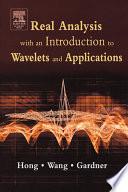This classic book is a text for a standard introductory course in real analysis, covering sequences and series, limits and continuity, differentiation, elementary transcendental functions, integration, infinite series and products, and trigonometric series. The author has scrupulously avoided any presumption at all that the reader has any knowledge of mathematical concepts until they are formally presented in the book. One significant way in which this book differs from other texts at this level is that the integral which is first mentioned is the Lebesgue integral on the real line. There are at least three good reasons for doing this. First, this approach is no more difficult to understand than is the traditional theory of the Riemann integral. Second, the readers will profit from acquiring a thorough understanding of Lebesgue integration on Euclidean spaces before they enter into a study of abstract measure theory. Third, this is the integral that is most useful to current applied mathematicians and theoretical scientists, and is essential for any serious work with trigonometric series. The exercise sets are a particularly attractive feature of this book. A great many of the exercises are projects of many parts which, when completed in the order given, lead the student by easy stages to important and interesting results. Many of the exercises are supplied with copious hints. This new printing contains a large number of corrections and a short author biography as well as a list of selected publications of the author. This classic book is a text for a standard introductory course in real analysis, covering sequences and series, limits and continuity, differentiation, elementary transcendental functions, integration, infinite series and products, and trigonometric series. The author has scrupulously avoided any presumption at all that the reader has any knowledge of mathematical concepts until they are formally presented in the book. - See more at: http://bookstore.ams.org/CHEL-376-H/#sthash.wHQ1vpdk.dpuf This classic book is a text for a standard introductory course in real analysis, covering sequences and series, limits and continuity, differentiation, elementary transcendental functions, integration, infinite series and products, and trigonometric series. The author has scrupulously avoided any presumption at all that the reader has any knowledge of mathematical concepts until they are formally presented in the book. One significant way in which this book differs from other texts at this level is that the integral which is first mentioned is the Lebesgue integral on the real line. There are at least three good reasons for doing this. First, this approach is no more difficult to understand than is the traditional theory of the Riemann integral. Second, the readers will profit from acquiring a thorough understanding of Lebesgue integration on Euclidean spaces before they enter into a study of abstract measure theory. Third, this is the integral that is most useful to current applied mathematicians and theoretical scientists, and is essential for any serious work with trigonometric series. The exercise sets are a particularly attractive feature of this book. A great many of the exercises are projects of many parts which, when completed in the order given, lead the student by easy stages to important and interesting results. Many of the exercises are supplied with copious hints. This new printing contains a large number of corrections and a short author biography as well as a list of selected publications of the author. This classic book is a text for a standard introductory course in real analysis, covering sequences and series, limits and continuity, differentiation, elementary transcendental functions, integration, infinite series and products, and trigonometric series. The author has scrupulously avoided any presumption at all that the reader has any knowledge of mathematical concepts until they are formally presented in the book. - See more at: http://bookstore.ams.org/CHEL-376-H/#sthash.wHQ1vpdk.dpuf
This classic book is a text for a standard introductory course in real analysis, covering sequences and series, limits and continuity, differentiation, elementary transcendental functions, integration, infinite series and products, and ...










